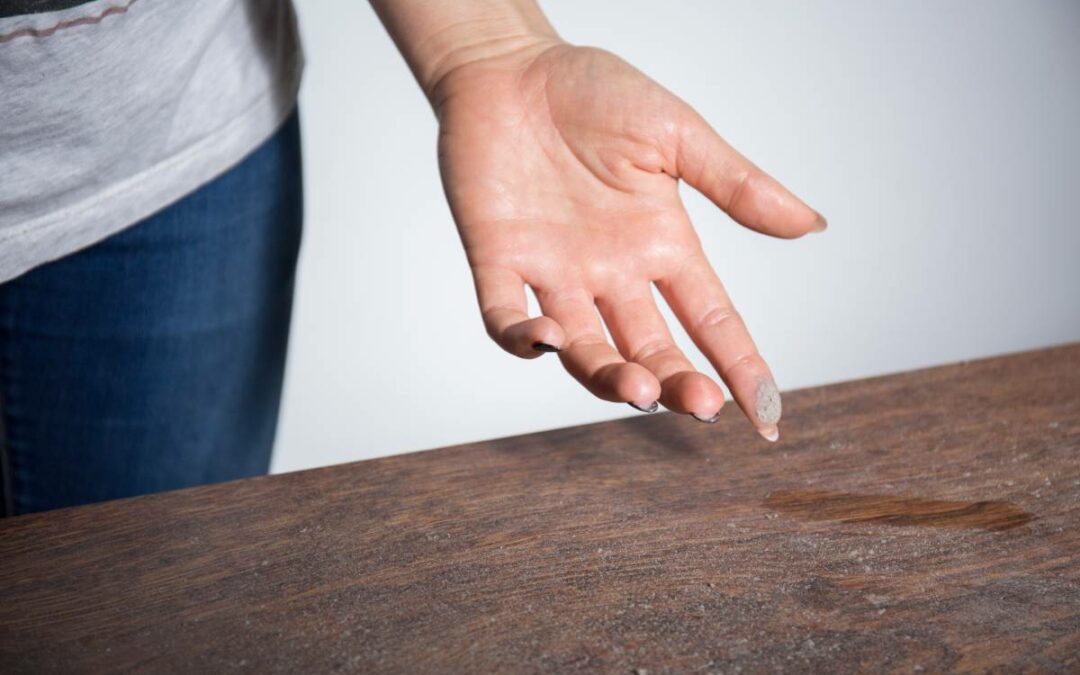Dust can have a significant impact on a home’s air quality and could trigger or worsen allergies and other respiratory issues like asthma. It also makes the house look dirty and could damage electronic devices and appliances. While thinking about a solution to get rid of or reduce the dust, the first option many people go for is an air filter.
But do air filters remove dust? The basic answer is yes. They help reduce the dust but are not a solution to eliminate it. Before buying an air filter, you need to know where dust comes from, how an air filter works and how you can improve its efficiency.
What Makes Up Dust?
The dust you mostly encounter in your house might primarily be a grey color, and you might be tempted to think it is mainly from dust outside and dead skin cells.
However, it is usually a combination of many more unexpected things, depending on how many people live in your house, the outdoor environment, pet presence, and the type of food you cook. Here is a list of indoor and outdoor elements that primarily make up dust.
- Pollen
- Mold spores
- Food debris
- Pet dander
- Hair
- Insect body parts
- Home construction materials
- Carpet dust fibers
- Plant materials
In addition to the dust we see, there are other invisible pollutants and allergens like smoke particles, bacteria, and chemicals.
How Do Air Filters Work?
Air filters come with fans and filters. The fans suck the air into the device, and as they propel it back out, the filters trap the dust and particles, releasing back clean air. The level of cleanliness of the air leaving the air filter depends on the filter you get, so ensure you shop around and compare before you buy.
Types of Air Filters to Consider
There are several air filters, depending on the filters they use and their MERV (Minimum Efficiency Reporting Value). This value classifies air filters depending on how much particles they can capture, running from 1–16.
HEPA (High-efficiency particulate air) filters are among the most efficient, removing up to 99.97% of particles and allergens as small as 0.3 microns. These are ideal if you or another family member has severe allergies or respiratory issues.
Other filters include pleated, fiberglass, UV light, activated carbon, electrostatic, washable, charged media, photocatalytic oxidation, and antibacterial and germicidal filters.
Other Factors to Consider
Size: Before buying an air filter, you must consider the size of the space you want to use it for. This way, it will deliver even air quality throughout the room.
Maintenance: Determine whether you can wash the filters or whether you need to replace them. If you can’t wash them, consider how often you need to change them.
CADR ratings: These determine how much purified air the air filter can deliver at its maximum speed for a particular duration.
Air change rate: This rate determines how many times your air purifier filters your entire room’s air per hour.
Warranty: Shop around different sellers and ensure they have long labor and material warranty periods.
How To Reduce Dust In The House
- Ensure your HVAC has dense filters
- Wipe down surfaces like tables and vacuum the floors regularly
- Avoid bringing in dirty things
- Clean your air vents and ventilation system often
- Brush your pets often, especially during shedding season
- Use doormats or remove your shoes before getting into the house
- Dust off your clothes, especially when pollen levels are high
- Keep your doors and windows closed when possible
- Change bedding weekly
- Invest in blinds to help trap big particles
Key Takeaway
An air filtration system can be an excellent investment to reduce dust levels in your home, as long as it isn’t the only measure you take. Take the time to carefully consider your air filter options and use the additional dust-reduction strategies outlined above. This holistic approach will ensure your home’s air quality sees some real improvement!


Recent Comments